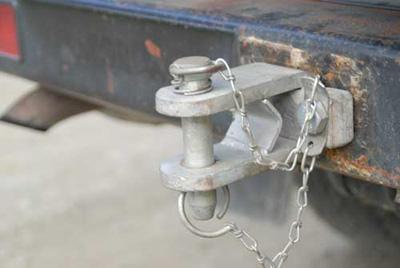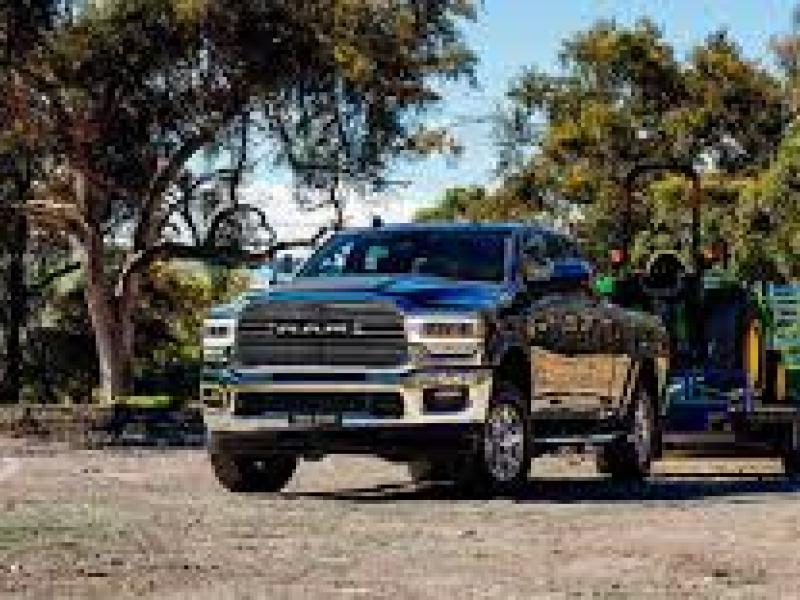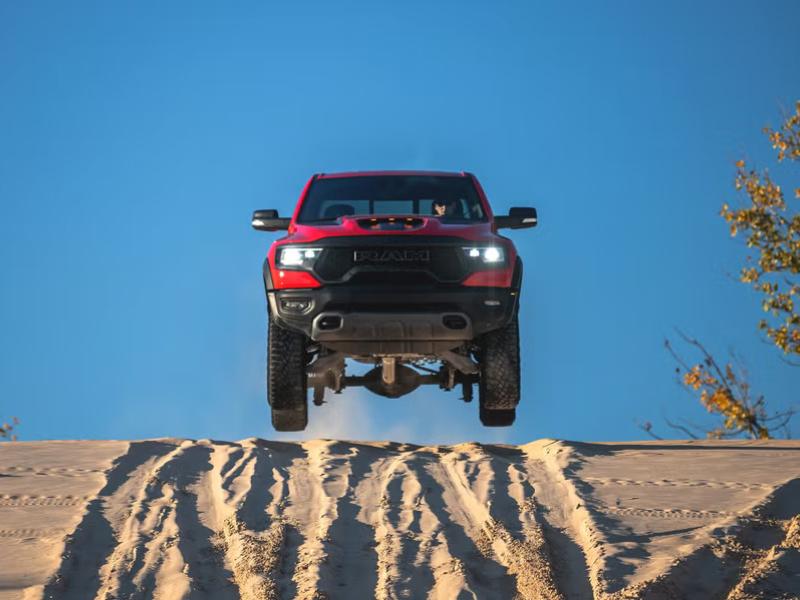Last month I spoke on the correct techniques for snatch (kinetic) recovery and the shock loading that can happen to the recovery points if incorrect techniques or straps are used. It only seems appropriate to follow up by talking about recovery points on 4WD vehicles.
Often we are told that to go off-road we need “rated tow hooks” for vehicle recovery and if you join a 4WD club they will say you need these before going out with them. Fundraising safaris and tag-a-long trips invariably have in their list of vehicle requirements that term “rated tow hooks” or “approved recovery hooks”.
Recovery points, sometimes commonly referred to as hooks, as that is the main type often specified by 4WD clubs in New Zealand and Australia, can come in many variants, with many overseas groups opting for other ways of attaching recovery ropes.
A standard type tow ball is not suitable as a recovery point and should never be used as such. The shank of the tow ball is not rated sufficiently to take the loadings of a snatch recovery.
Generally speaking vehicles are usually fitted with transportation “tie-down” points at time of manufacturer and typically only one bolt holds these on. A tow point is a little more robust in construction or fitmen,t and may be as simple as a flat piece of steel with a hole punched in. A recovery point is manufactured as a round loop or hook, either forged or welded design, and typically bolts to the front and rear of the chassis with high tensile bolts.
But do rated recovery points really exist or are they mostly a myth? Robert Pepper, an Aussie four-wheeler, journalist and author of the 4WD Handbook, thinks they are largely non-existent, and I have to agree with him. Robert recently did a small article on his Blog site, and believes that no vehicle manufacturer will approve anything on its vehicle for recovery, nor specify a safe working load limit for its recovery points, and he is right.
“Time and time again we hear that recovery points must be ‘rated.’ which means officially approved for a given load and given use, specifically vehicle recovery.” Robert wrote on his 4WD Blog.
Of course no manufacturer is going to approve anything on its vehicles for recovery off-road, nor specify a working load limit for any recovery points it may have fitted, because of liability reasons.
When we look at what is rated and what is not, we find very little is actually “rated” for the purposes we use them for. Tow hooks may be rated and have a rating or load limit stamped on them, but that is irrelevant once attached to a vehicle. It all comes back to how that “rated” hook or recovery point has been attached to the vehicle and the thickness and condition of the chassis or bumper it is bolted to, along with the type of bolts used.
In the lifting industry equipment is rated with a “safety factor” to a safe working load limit or SWLL, which is usually one fifth or one sixth of the breaking limit. The safe working load (SWL) or working load limit (WLL) varies depending on the item concerned.
In New Zealand the safe working load of a shackle in the lifting and rigging industry is one sixth of the breaking load. In other words if a shackle rated to 3.25-tonne, its actual breaking limit is 19.50-tonne.
So what is the safety factor on the so-called aftermarket tow hooks we use on our vehicles? I couldn’t find anything definite in my research other than most are forged steel hooks rated to 10,000lbs or 4,535kg. Rated they may be, but not even the manufacturers of these hooks have any way of knowing how the hook will be mounted.
Some are supplied with the correctly specified high tensile grade 8.8 12mm bolts for fitting, but unless the hook and attachment are all engineered to a given rating, the rating becomes arguable.
One thing you never do with these “rated” tow hooks is weld them on to the vehicle, no matter how good your welding is. The heat from the welding will change the structure of the metal within the tow hook and the chassis or mounting point on the vehicle, weakening it. Also, the welds are unlikely to be able to handle the side loadings sometimes put onto tow hooks during recovery.
The loops under the aftermarket bull bars such as those sold by ARB and TJM are not meant for snatch recovery either, but are rather only there for towing.
The 4WD club scene in NZ will ask that member’s vehicles “must have heavy duty forged steel tow hooks fitted front and rear or manufacturers’ rated hooks. They should have a certified rating of 10,000 lb. Mount to the chassis with at least two 12 mm, grade 8.8 high tensile bolts and nuts, and reinforcing backing plates.”
The requirement is brief and to the point, but not overly helpful, especially as a manufacturer does not give a rating for the tow points.
However, there is at least one club that has gone further and produced written documentation covering “minimum standards for tow hook mounting” on members’ vehicles.
The document, by the Wellington CCVC, and available from its website, covers all aspects of the tow hook, the mounting of the hooks, the torque figures for the various bolts, and specifications for mounting depending on the thickness of the chassis rail.
For instance, if the chassis thickness is 3mm or less, then three bolts are to be used when bolting hooks to the chassi,s together with a 5mm mounting plate no less than 120mm long. Bolt holes through the chassis rail need to be tubed and plated.
The four-page document, which can be found at www.ccvc.org.nz/index.php/ccvc/Trips/Equipment-Required-On-Trips even has technical drawings for the tow hook mounting. If looking to fit recovery points to your vehicle then I recommend this as a must read before doing anything else.
When mounting recovery points they should be to the chassis or in line with the chassis rails. It is preferable to have two recovery points at each end of the vehicle and to use a bridle to spread the load on these points, especially during hard or severely bogged recoveries.
There is one manufacturer of off-road accessories and equipment that has recently gone as far as to market a rated recovery point. ARB has engineered a “Recovery Train” in which the vehicle specific recovery point is rated for use with a 4.75-tonne rated bow shackle and an 8,000kg nylon snatch strap.
Each ARB recovery point is built from the ground up, and undergoes considerable research and design involving actual vehicle chassis samples and CAD data relating to critical front sections of the vehicle. Dozens of designs are explored, with the more promising models built into prototypes and tested on the actual vehicle chassis using ARB’s various load and destructive testing equipment.
One of the design features is the ability of these points to be rated in an angled direction of pull for angles up to the maximum turn angle of the front wheels of the vehicle. ARB recovery points have a long slot that allows the bow of the shackle to be fed through and the snatch strap is attached via the pin instead of the bow. This allows the shackle to pivot within the recovery points to avoid side loads on the pin.
They are supported by a two year guarantee, but at this stage the ARB recovery points are only available for a small handful of selected vehicles, although ongoing development will see other models included within the range over time.
Recovery point options
The most common recovery point is the recovery hook, which should be mounted to the chassis rail. They can be mounted to bumpers, but only where the bumper mounts are strong enough i.e. strengthened, and that the mounting is in line with the chassis rails with reinforcing plates.
Many have “keepers” as part of the hook to keep the rope or snatch strap attached, essential if mounted sideways or upside down underneath so the rope doesn’t fall off. Quite often these keepers get bent out of shape or the rope is attached without putting it under the keeper, and they become troublesome.
Hooks that are accessible are often preferred by the South Island clubs which tend to traverse a lot of rivers, and if a vehicle gets into trouble it is quick and easy to attach a rope. Trying to attach a rope with a shackle often under flowing water is extremely difficult. (I can vouch from personal experience on that one).
Tow bars are generally mounted strongly enough to the vehicle’s chassis rails, so removing the tow ball and putting a rated shackle through the hole is recognised as an acceptable recovery point. If the tow bar is a receiver hitch type then there are recovery hitches available that fit and allow the rope to be attached via a shackle, rated of course. Even without a recovery hitch you can still feed the eye of the strap into the tow bar connect with the hitch pin.
Towing jaws are another option as a recovery point. Usually bolted as part of the tow bar set up, they are usually found on farming, rural or agricultural type vehicles. The Dixon-Bate towing jaw is rated for towing to 3.5-tonne and was fitted as part of the standard equipment to the Camel Trophy Land Rovers, two of the 3.5-tonne jaws at the front and a larger four-bolt 5-tonne at the rear.
The military type pintle hook is also used on the rear of many vehicles, especially where they have the ability for four horizontal bolt holes for mounting. Generally these are not an option for the front of a vehicle.
The Nissan Patrol GQ has a four-bolt towing eye on the rear cross member which is bolted via captured nuts. Technically they are not rated, although many people have used these for snatch recovery - but you need to keep an eye on the bolts and captured nuts. They have been known to break away either due to shock loading or rust and age.
Land Rover has what is known as JATE rings for the coil spring 90/110/Defenders and Discoverys. These were a military fitment and named after the Joint Air Transport Establishment (JATE) which designed them for with the airlifting of military Land Rovers by helicopter.
They fitted to the chassis rails front and rear, and while regarded as suitable for 3.4-tonne (lifting), you would be hard pressed to find a rating for their use as recovery points, even if bridled together. One of the advantages of the JATE rings is that by using a shackle they could swivel and allow recoveries at an angle, (much like the new ARB recovery points). The downside is that when buried in mud you have to go searching for them under the vehicle.
One thing you never do is wrap a strap around the bars or uprights of a bulbar. They are not strong enough for towing and this will only successfully pull the bull bar off or at least damage it beyond repair, as well as creating a highly dangerous situation.
It’s not possible to really fully describe what a good recovery point is, and what’s not, here as each vehicle needs to be individually assessed. It is up to you to ensure you have suitable recovery points on your vehicle and that they are safe for the intended use
While recovery points in most cases are not officially rated, you must ensure that what you use and however you mount a recovery point, it is done so with consideration to the forces involved and be mounted properly, only using properly rated equipment for your own safety and the safety of others with you.
And maybe it’s time for the 4WD community in general to cease talking about the largely non-existent “rated recovery points”.
Rated ‘R’ for Recovery
News and General
Wednesday, 19 September 2012







